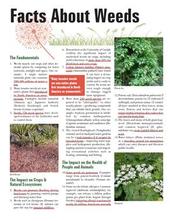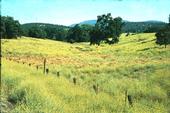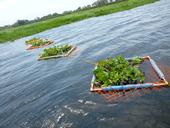- Author: Rebecca Ozeran
As a livestock and natural resources advisor, I don't expect to get questions about fruit trees such as figs. As it turns out, I recently needed to know just enough about figs to provide information on how to kill them - a west Fresno County landowner contacted me to ask how he could get rid of some fig trees that were threatening his belowground water pipelines.
Before writing this post, I did my due diligence and confirmed that no one has already discussed fig trees as the target of weed control on this blog. The only mentions of fig trees in the UC Weed Science blog history are a listing of approved herbicides to control weeds in California subtropical crops as of 2 years ago1 and a mention that fig was one of...
- Author: Brad Hanson

The Weed Science Society of America (WSSA) announced earlier this month several new or updated educational publications about weeds and weed impacts that will be of interest to both the scientific community as well as the general public.
Click here for the press release and an overview of the publications. Or you can get to the individual publications by clicking below:
- Weed Definitions (weeds, noxious weeds, invasive weeds, and "superweeds" among...
- Author: Joseph DiTomaso

So far, this year is beginning to look like a strong El Nino weather pattern throughout much of California. The last time we had a very strong El Nino was the winter of 1997-1998. For those of you that remember back then, yellow starthistle (Centaurea solstitialis) infestations were enormous, both in terms of cover and height. For example, the attached photo was taken in Calaveras County in the summer of 1998, after the El Nino winter. In this case, yellow starthistle probably covered 80% or more of the area and was at least four feet tall, sometimes even six feet in height. The reason yellow starthistle does so well under these conditions is that high rainfall recharges the deep soil moisture, which is where yellow starthistle...
- Author: Guy B Kyser

This salsola scene reminds me of Alexander Nevsky's battle on the ice, or maybe Rimsky-Korsakov's "Flight of the Tumbleweed"
- Author: Guy B Kyser
- Author: John Madsen

In summer 2015, USDA-ARS and UC Davis Dept of Plant Sciences set up a water hyacinth control study with California Department of Boating & Waterways. The goal of the study was to determine the best of several different surfactants to pair with an aquatic-use formulation of glyphosate.
Aquatic weed trials are tricky compared to terrestrial trials, because the test sites are three-dimensional and they move around. In addition, water hyacinth is free-floating. In order to establish secure test plots, we built floating 1-m2 quadrats out of PVC pipe, swim noodles, and construction fencing.
On 31 July, we anchored the quadrats in open water within a sunken island in the Sacramento delta. Quadrats were...


